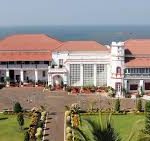NiveditaAntyakula
In the present day scenario, cinema, a very popular means of audio-visual media, has become increasingly significant in popularizing Indian history and culture. Thanks to cinema, history which is connoted as boringbecomes enticing!These historical, period films with their grandeur, opulence, larger than life portrayal of characters, and mega costumes transport us back in time to those particular eras. Significantly, the historical movies are most often accused with distortion of facts. However, with films based on history, historical figures and their architectural brilliance have become popularized. People have now begun to show renewed interest in Indian history, art, and culture. Owing to history-based movies, as tourist destinations, historical monuments that were once forgottenare also getting a new lease of life.
For example, Sanjay LeelaBhansali’sPadmaavat has brought Khilji tomb near the QutubMinar into the limelight. Padmaavathas made people curious about AlauddinKhilji, his dynasty, the kind of architectural features that he added to the city of Delhi, and how he was as a person and a ruler of Delhi sultanate. Another Bhansali’s period film BajiraoMastanihighlighted historical figures like PeshwaBajirao and his love interest Mastani. Earlier, the movie PK has popularized Agrasen Ki Baoli, and Jodhaa Akbar made Akbar fort and the personality of Akbar popular. AshutoshGowariker’sMohenjoDarotook us back in time to the Indus Valley civilization and its city MohenjoDaro, one that we all have probably studied in schools!
Even today people talk about the love affair between Mughal prince Salim (Emperor Jahangir) and Anarkali, a court dancer, and Emperor Akbar’s disapproval of their relationship, all thanks to the 1960’s K. Asif’s directed historical drama Mughal-e-Azam. These historical figures remain etched in our memories. The Taj Mahal needs no introduction. But period films centering on the Taj Mahal like M. Sadiq’s Taj Mahal (1963) has definitely popularized the monument of love. The list is endless and it goes on JNot just Bollywood, but regional cinema too has played its own part in generating the curiosity of the locals about the landmarks of the place where the film is based. To serve this purpose, i.e., to sustain interest in history, more and more historical movies have to be encouraged on the various eras or with eras as their backdrop.



























